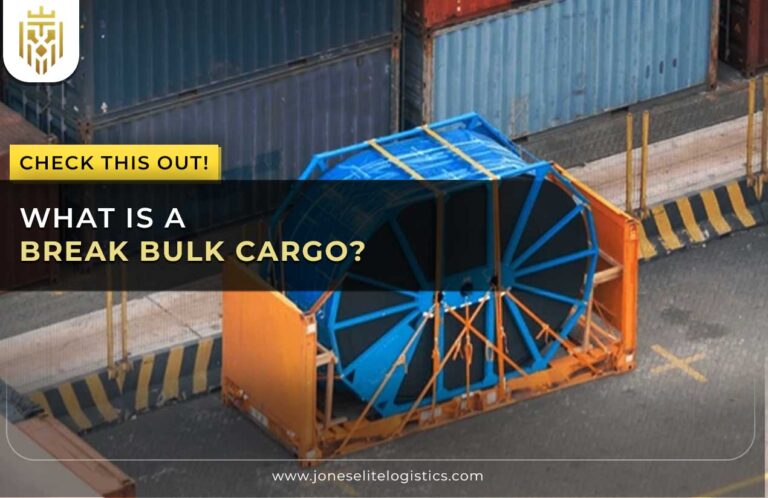What is Freight?
Freight refers to goods transported in bulk by air, surface, or sea to conduct trade. Cost associated with transporting goods through different systems like air freight and sea freight is also referred to as the term. For global businesses that manage bulk goods, understanding freight shipping meaning is critical to ensure the proper delivery of goods.
What is Freight Shipping?
Large scale goods movement is handled by freight shipping using multiple transport modes, including trains, planes and ships. Freight transportation cannot exist without it, it plays a major role in international shipping and complex supply chains. The efficiency of heavy shipments is defined by factors such as distance, shipping freight rates and transport modes.
Freight Shipping Modes:
There are various modes of shipping freight; air, sea, and road transport. Different modes bring different advantages depending on the size of the shipment, urgency, and cost, such as LTL and FTL for efficiency.

Less Than Truckload(LTL):
LTL freight shipping combines several shippers’ smaller loads into one truck for the lowest cost and space. The hub and spoke model utilises secure pallets to minimize damage from this mode. It functions as a perfect solution for medium-sized loads that a business needs to manage within the heavy freight shipping.
Full Truckload (FTL):
FTL freight shipping allocates a truck to a single shipment to guarantee delivery. This minimises handling risk while providing the flexibility of custom schedules. For businesses shipping large volumes and concentrating on dependable freight transport services, this mode is best suited.
Partial Truckload (PTL):
PTL freight shipping is a shared truck space for mid sized shipments with cost and efficiency considered. Transit time may be longer but it reduces damage risks compared to LTL freight shipping. Medium freight shipping means businesses can choose flexible delivery with PTL.
Intermodal:
Intermodal freight shipping is the combination of two or more modes of transport (truck, train, ship) without changing containers. Low costs, security, efficient freight transportation globally are all made possible by this environmentally friendly approach. For businesses looking to streamline logistics across borders, it’s vital.
Expedited:
Expedited freight shipping is a mode of shipping urgent delivery by fast transport modes—air freight and optimised ground routes—within a shorter timeframe. It is a premium service that minimises handling and gives real time updates for high value goods. It handles the tight deadlines, even though shipping freight rates are higher.
Components of a Good Freight Shipping Quote:
Details such as company name, shipment mode, cargo information, dimensions, weight, origin, destination and the cargo value are leveraged to form freight shipping quotes that provide the most accurate pricing and timely service.

Company Name:
Registered company name provides the freight brokers a way to handle the shipping request efficiently and with reliability to provide the freight transportation services. A clear company name makes air freight and sea freight documentation straightforward. It also aids logistics providers in planning effectively for heavy freight shipping and avoiding unnecessary delays.
Contact Information:
Phone and email are clear contact details that are necessary for coordination of freight shipping operations. An effective communication can provide the accurate updates of freight shipping rates and delivery schedules. Reliable contact information is shared to minimize errors in freight transportation processes.
Supplier/Origin Address:
Accurate origin addresses help streamlining freight transportation and eliminating logistics errors through accurate pickup. It is necessary for sea freight or air freight where the timing is so important. Additionally, the detailed origin gives a more precise freight shipping rate calculation which in turn improves the shipping process.
Cargo Ready by Date:
Scheduling and optimising timely freight shipping is achieved by sharing the cargo availability date. This allows the freight broker to schedule the freight shipments to go with the most suitable freight transportation mode. Also, timely readiness also reduces wait times for heavy freight shipping to run efficiently.
Shipment Mode:
Air freight, sea freight or road transport for shipment size, urgency and cost. Choosing the right mode minimizes transit time while also matching to shipping freight rates. There are each mode that cater to certain freight shipping needs so that they can be flexible for different freight shipping needs.
Type of Package:
By identifying packaging types like pallets or crates, you have certain safety at stake when shipping heavy freight. Packaging goods during freight transportation is necessary for protection and reduction of the risks of traveling. It also affects freight shipping rates, because carriers put a priority on secure and manageable loads.
Value of Shipment:
Protecting against loss when shipping freight, declaring value meets insurance requirements. Valuation is accurate, especially for air freight and sea freight to comply with customs. High value shipments in heavy freight shipping require transparent communication.
Number of Containers:
Specifying containers also helps to allocate appropriate freight space-saving and shipping freight rates. It helps freight brokers optimally plan freight transportation, and reduces waste in the freight transportation. The clear container requirements simplify operations for air freight and sea freight logistics.
Destination Address:
Detailed destination addresses prevent transit delay allowing for timely freight transportation. Logistics teams can calculate freight shipping rates precisely if they have accurate information. It also facilitates coordination of multiple transport modes, including heavy freight shipping by sea freight and road.
Dimension of Shipment:
With precise dimensions, space is optimized for cost effective freight shipping. For shipping heavy freight shipping, dimensions are used by carriers to calculate freight shipping rates. Sizing is accurate to improve compatibility with containers and reduce delays and smooth freight transportation.
Weight of Shipment:
Weight details are accurate for appropriate transport modes and transparent shipping freight rates. Weight declaration helps logistics providers choose an appropriate vehicle for freight transportation. It makes sure you comply with the regulations of air freight and sea freight, and it shapes out additional costs or delays.
Factors that Determine Freight Shipping Rate:
The distance, delivery time, weight, size and weather will determine the freight shipping rates. These factors are considered by freight brokers to optimize routes which will accommodate to cost effective and efficient freight transportation solutions.

Distance:
Shipping freight rates are higher because longer distances require higher fuel and labour costs, which in turn significantly affect the overall freight expenses. In freight transportation, long extended transit routes are accompanied by further logistical complications. Freight broker efficient route planning saves cost for air freight and sea freight operations.
Delivery Time:
Expediting freight shipping charges are higher than urgent deliveries, and the charge is dependent on how urgent the delivery is. Quick freight transportation is often more valued than cost to businesses who rely on it. In the world of air freight, freight brokers ensure that urgent shipments are always delivered on time and with the reliability they need.
Weight and Size:
As with any other product, the heavier and larger the freight shipment, the more it costs in freight shipping rates, and carriers use dimensional weight and density to price heavy freight shipments. Compliance and cost optimization are guaranteed by accurate declarations of weight. It helps in planning the efficiency, especially in sea freight and in other bulk freight transportation methods.
Weather:
Freight transportation by sea freight is disrupted by adverse weather, which results in adjusted rates during risky seasons. Increased operational costs are due to delays in shipments caused by conditions such as storms or fog. Freight brokers help you out by providing you with alternative routes or modes such as air freight to get your cargo delivered on time.
FAQs
1. What is Freight Shipping?
Freight shipping refers to the process of transporting large amounts of goods through land, sea, or air across different modes such as ships, planes, and trucks mostly on an international or large shipment basis.
2. How to get Freight Shipping Quotes?
Supplying information such as company name, shipment mode, cargo details, dimensions, weight, value, origin and destination, helps you get freight shipping quotes with accurate price estimates and planning.
3. What are Factors that Determine Freight Shipping Rate?
Factors like distance, delivery time, weight, size and weather all factor into the shipping of freight rates. In freight transportation, freight brokers assist in optimising routes and managing costs.
4. What are the Freight Shipping Modes?
Forms of freight shipping are air freight, sea freight and road transport. There are options like LTL or FTL for efficiency, depending on the need, each mode suits different needs; speed, cost, shipment size, etc.







